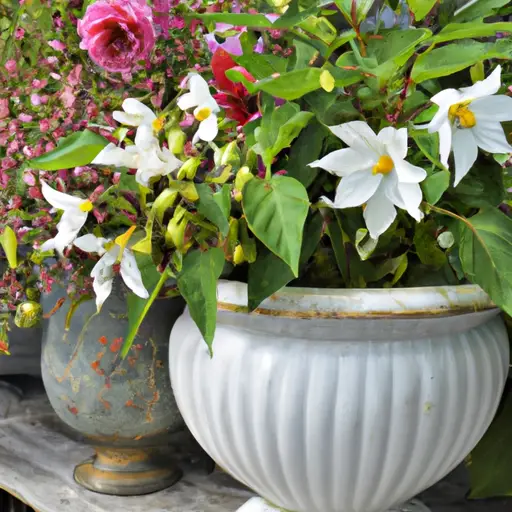The Art and Science of Container Gardening: Tips and Tricks Revealed
Container gardening is a versatile and enjoyable way to create a beautiful garden in limited spaces. Whether you have a small balcony, patio, or even just a windowsill, you can transform it into a green oasis with the art and science of container gardening. This article will provide you with valuable tips and tricks to help you get started and achieve success in your container gardening journey.
1. Choosing the Right Containers:
The first step in container gardening is selecting the right containers for your plants. Consider the size and weight of your container as it should be appropriate for the plant’s size. Additionally, ensure that your container has proper drainage holes at the bottom to prevent waterlogging.
2. Soil Selection:
Selecting the right soil is crucial for the healthy growth of your plants. Opt for a high-quality potting mix that is well-draining, lightweight, and rich in organic matter. Avoid using garden soil as it tends to become compacted in containers.
3. Plant Selection:
When choosing plants for your container garden, consider factors such as sunlight requirements, temperature tolerance, and available space. Select plants that complement each other in terms of growth habits, colors, and textures.
4. Placement and Sunlight:
Understanding sunlight requirements is vital for successful container gardening. Observe your space throughout the day to determine whether it receives full sun (at least six hours), partial sun (four to six hours), or shade (less than four hours). This information will guide you in selecting appropriate plants for each spot.
5. Watering Techniques:
Watering plays a significant role in container gardening since containers tend to dry out more quickly than traditional gardens. To ensure adequate moisture retention without overwatering, water deeply until water drains out of the bottom drainage holes.
6. Fertilization:
Plants grown in containers rely heavily on nutrients provided by fertilizers since they have limited access to the soil. Slow-release fertilizers or balanced liquid fertilizers can ensure consistent nutrient supply throughout the growing season. Follow the instructions on the fertilizer packaging to avoid over-fertilizing, which can damage the plants.
7. Container Maintenance:
Maintaining your containers is essential for their longevity and the health of your plants. Regularly check for pests, diseases, and signs of nutrient deficiencies. Prune dead or damaged foliage, and remove spent flowers to encourage new growth.
8. Companion Planting:
Embrace companion planting techniques to enhance the beauty and productivity of your container garden. Pair plants that have mutual benefits such as repelling pests or attracting beneficial insects. For example, planting marigolds near tomatoes can deter aphids.
9. Vertical Gardening:
Utilize vertical space in your container garden by incorporating trellises, stakes, or hanging baskets. This technique not only maximizes space but also adds visual interest to your garden.
10. Seasonal Rotation:
Consider seasonal rotation of plants in your containers to keep your garden looking fresh year-round. Swap out cool-season crops for warm-season crops when appropriate to ensure continuous growth and harvest.
11. Overwintering:
Some plants can be overwintered indoors if they are not winter-hardy in your climate zone. Before winter arrives, research which plants can be brought inside and how to care for them during the colder months.
12. Creative Container Ideas:
Add a touch of creativity and personalization to your container garden by choosing unconventional containers such as old buckets, wheelbarrows, or unique planters found at thrift stores or flea markets.
Container gardening is an art that allows you to experiment with various combinations of plants, colors, textures, and structures in a limited space while utilizing scientific principles for optimal growth. With these tips and tricks in mind, you can create a thriving container garden that brings joy and beauty into your life throughout the year!













